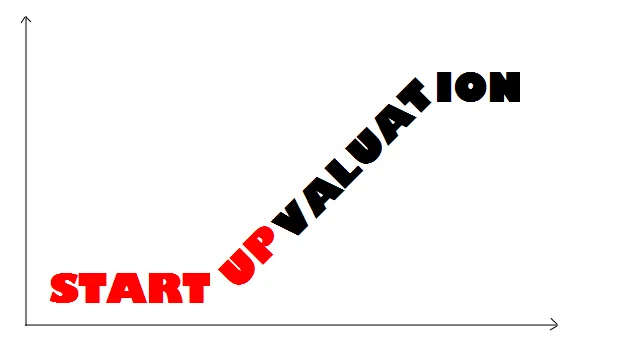How does an investor value a startup?
One of the most frequently asked questions at any startup event or investor panel is, “how do investors value a startup?” The unfortunate answer is: it depends.
Startup valuation, as frustrating as this may be for anyone looking for a definitive answer, is in fact a relative science and not an exact one.
The biggest determinant of your startup’s value are the market forces of the industry and sector in which it plays, which include the balance (or imbalance) between demand and supply of money, the timeliness and size of recent exits, the willingness for an investor to pay a premium to get into a deal, and the level of desperation of the entrepreneur looking for money.
While this statement may capture the bulk of how most early stage startups are valued, we will try and explore the details of valuation methods in the remainder of my post with the hope of shedding some light on how you can try and value your startup.

Some of the valuation methods you may have heard about are as follows:
- The DCF (Discounted Cash Flow)
- Market & Transaction Comparables
- Asset-Based Valuations such as the Book Value or the Liquidation value.
A startup company’s value, as mentioned earlier, is largely dictated by the market forces in the industry in which it operates. Specifically, the current value is dictated by the market forces in play today and perception of what the future will bring.
How does an investor then decide what my value should be now?
Again, knowing what the exit price will be, or having an idea of what it will be, means that an investor can calculate what their returns will be on any valuation relative to the amount of money they put in, or alternatively what their percentage will be in an exit (money they put in, divided by the post-money valuation of your company = their percentage). Before we proceed just a quick glossary:
- Pre-Money = the value of your company now
- Post-Money = the value of your company after the investor put the money in
- Cash on Cash Multiple = the multiple of money returned to an investor on exit divided by the amount they put in throughout the lifetime of the company
Valuation when there is no revenue or asset
In case the startup company does not have any revenue or asset as on the date of valuation, the earnings and the assets approach becomes irrelevant, hence the only option is the market approach which one has to apply. No business operates in a vacuum. Every business has possibility that a similar business must be in existence. Hence the optimum method would be the market price method of valuation.
There should be an attempt to collate relevant information required for valuing the business of a startup company where such information can be had from the following sources:
- Market Survey – including all sorts of public data about the company depending upon the industry in which it is being valued.
- Data from comparison of companies – data received from review of comparable companies within the industry.
- Future projection – includes all future expected cash inflow and outflow, net profitability, asset – liability position, say for the next 5 years.
Well, there are several methods, but mainly “instinctual” ones and quantitative ones. The instinctual ones are used more in the early-stage type of deals and as the company grows, along with its financial information, quantitative methods are increasingly used.

Instinctual ones are not entirely devoid of quantitative analysis, however, it is just that this “method” of valuation is driven mostly by an investor’s sector experience about what the average type of deal is priced at both at entry (when they invest) and at exit. The quantitative methods are not that different, but incorporate more figures (some from the valuation methods outlined) to extrapolate a series of potential exit scenarios for your company.For these types of calculations, the market and transaction comparables method is the favored approach. As I mentioned, it isn’t the intent of this post to show how to do these, but, in summary, comparables tell an investor how other companies in the market are being valued on some basis (be it as a multiple of Revenues or EBITDA, for example, but can be other things like user base, etc) which in turn can be applied to your company as a proxy for your value today.
What attracts investors
Gripping or footage – The most imperative factor which an investor would look out for is traction. Their level of conviction boosts high even if the other factors are not going in the entrepreneur’s favor. The sole drive or object of a company is to get users.
Revenue – The net takings home or the profitability is the driving factor where it makes the company easier to value. It depends a lot on the level of revenue generation as for startups it might lower the valuation temporarily. If the consumers/users are charged high, growth becomes slower which ultimately means less money over a long period of time, thus lower valuation.
This seems contradicting because subsistence of revenue means the startup is closer to actually making money. But in real sense, a startup is not only about revenue generation, it’s about growing fast and making money. If a faster growth does not persist, we are not innovating but getting into traditional money-making business.
Founder’s profile – Nevertheless if all tactics for raising funds fail, what investors mostly look into is the profile of the entrepreneur. There is a kind of reputation that calls for a high valuation no matter what his next idea is. Entrepreneurs who might have earlier backed out or exited from their venture also have a propensity to get higher valuation. Having a profound prototype and with the right support mechanism, these entrepreneurs can transform their business ideas into successful enterprises. And that’s the reason, when all factors fall weak, investors rely on the image of the person.
Conclusion
To conclude, the language of any business is finance and this is when startups feel the pinch. There comes into picture the valuation of its business and hence the funding requirement. Funding is solely idea specific and the investors basically look into potentiality and size of target market and its growth followed by the credibility, reputation and background of the founder.
Drop a comment here in case of queries. The author (founder of TaxMantra) can be reached at [email protected] .







